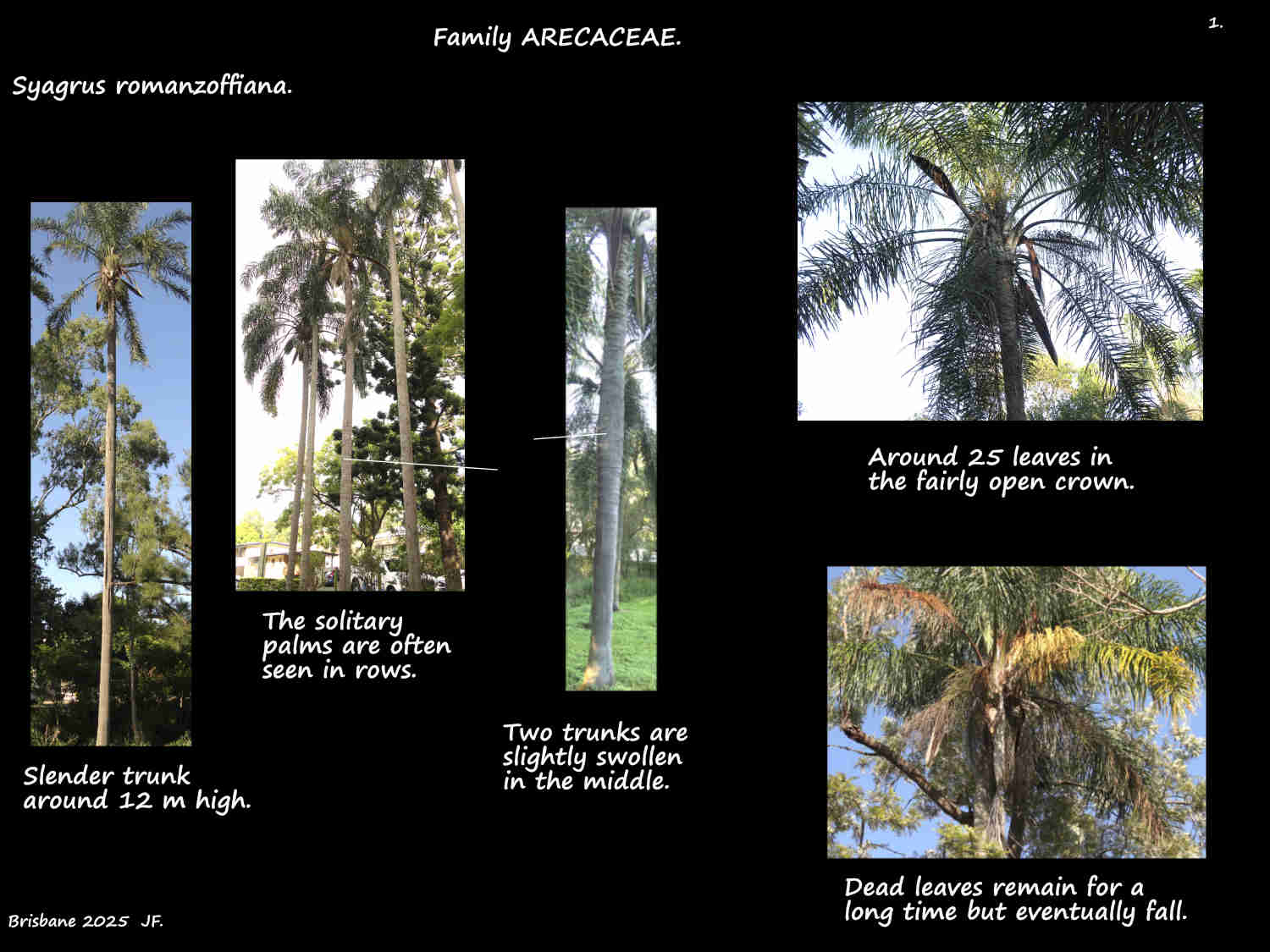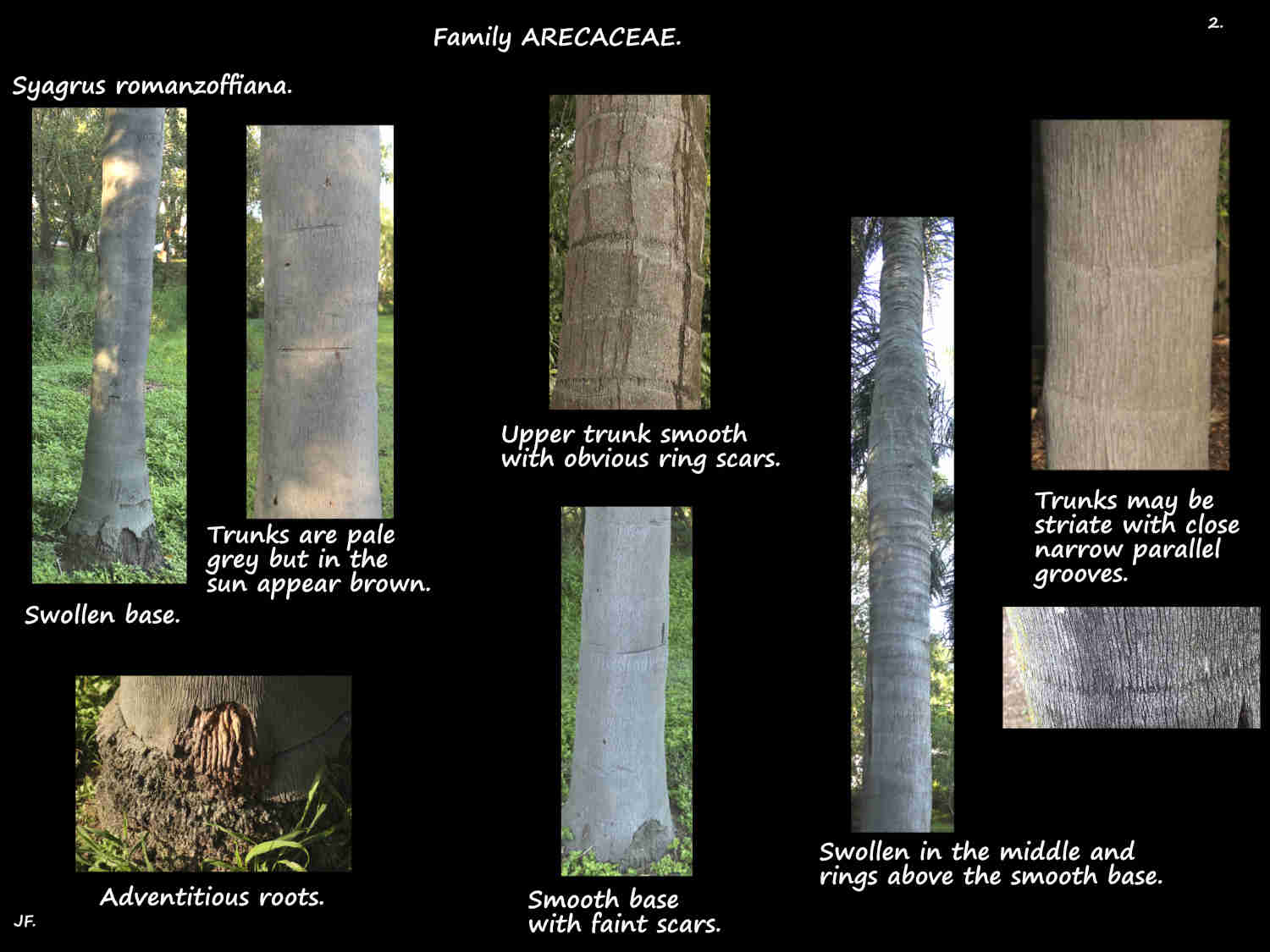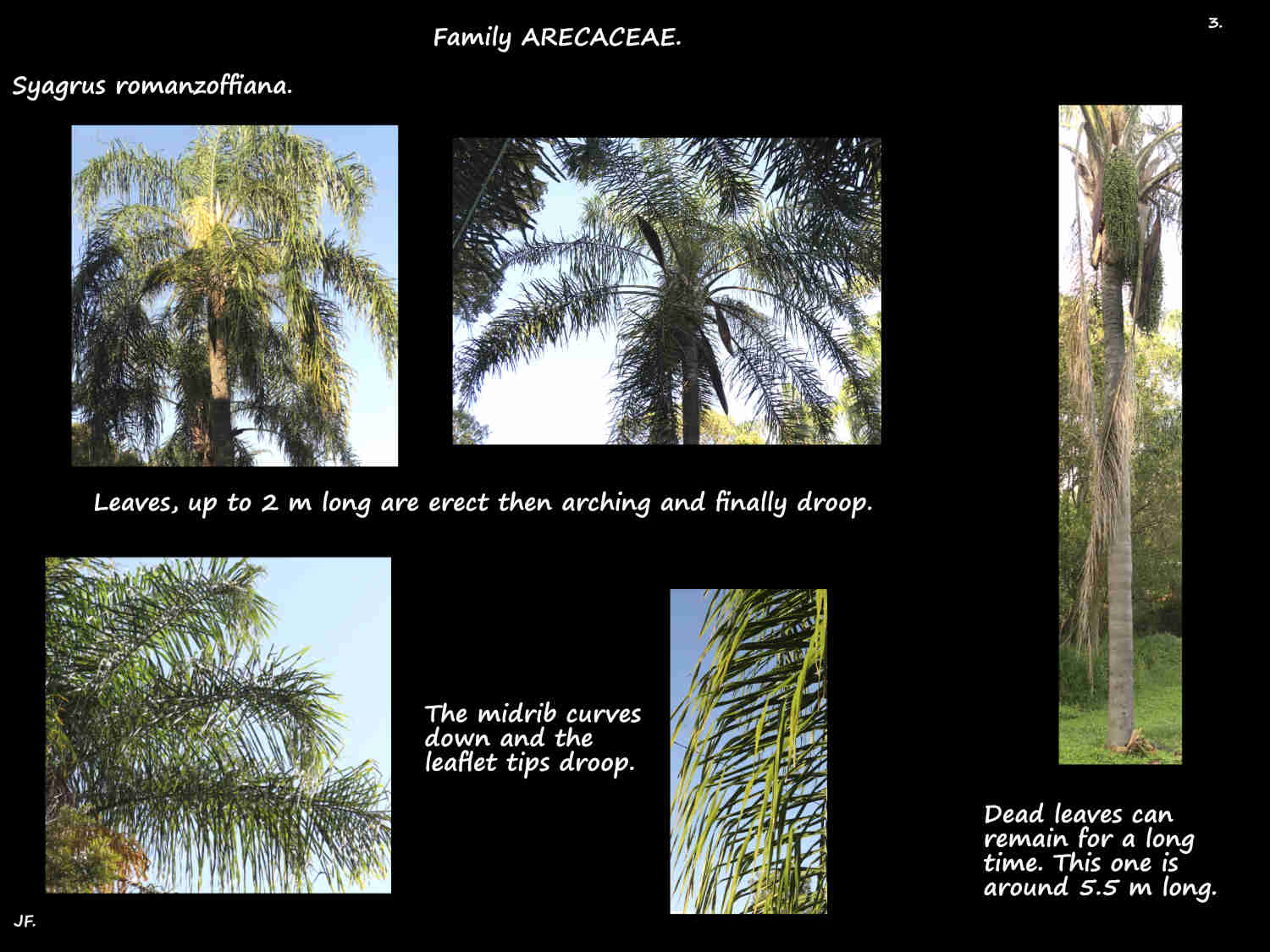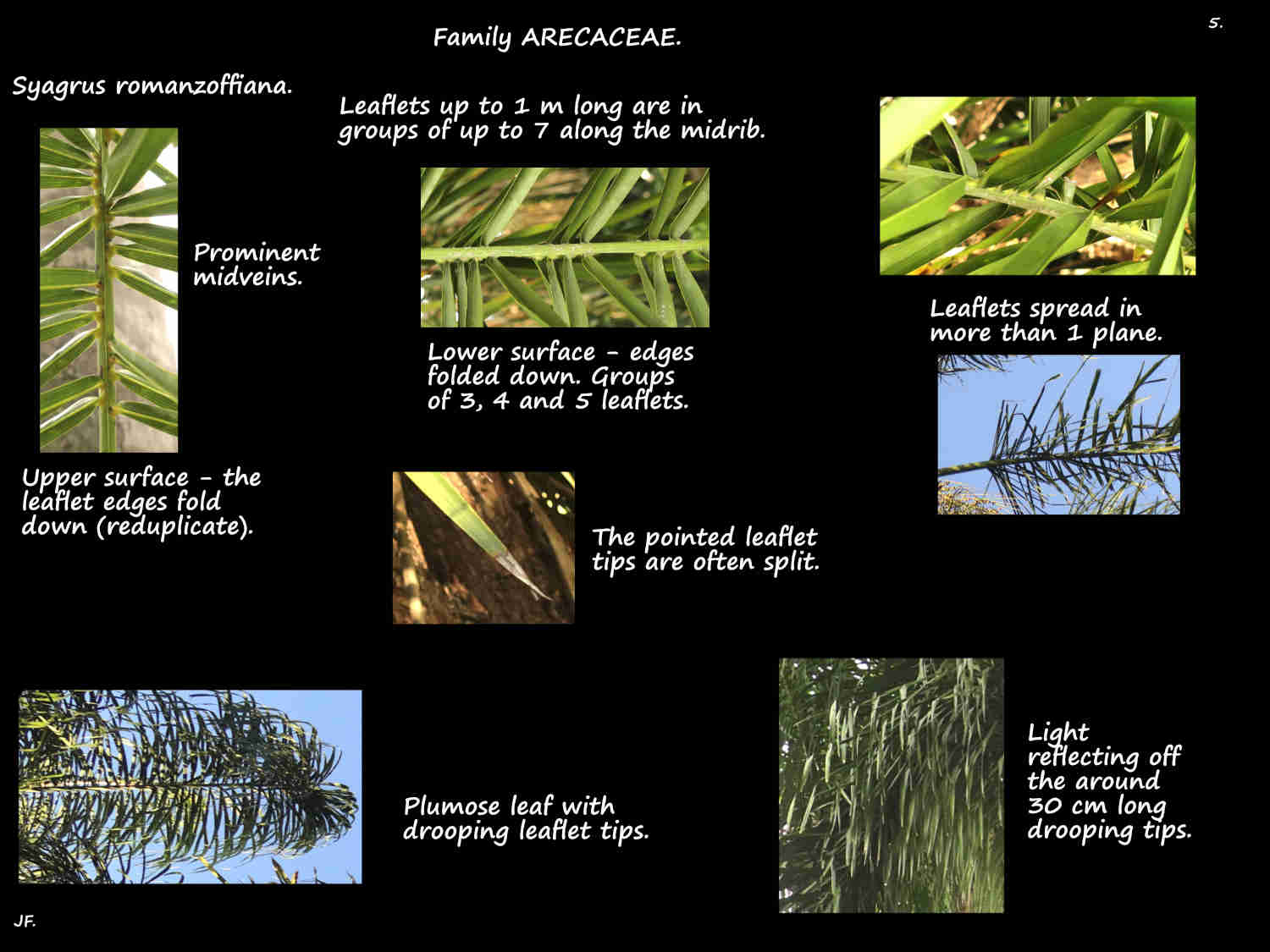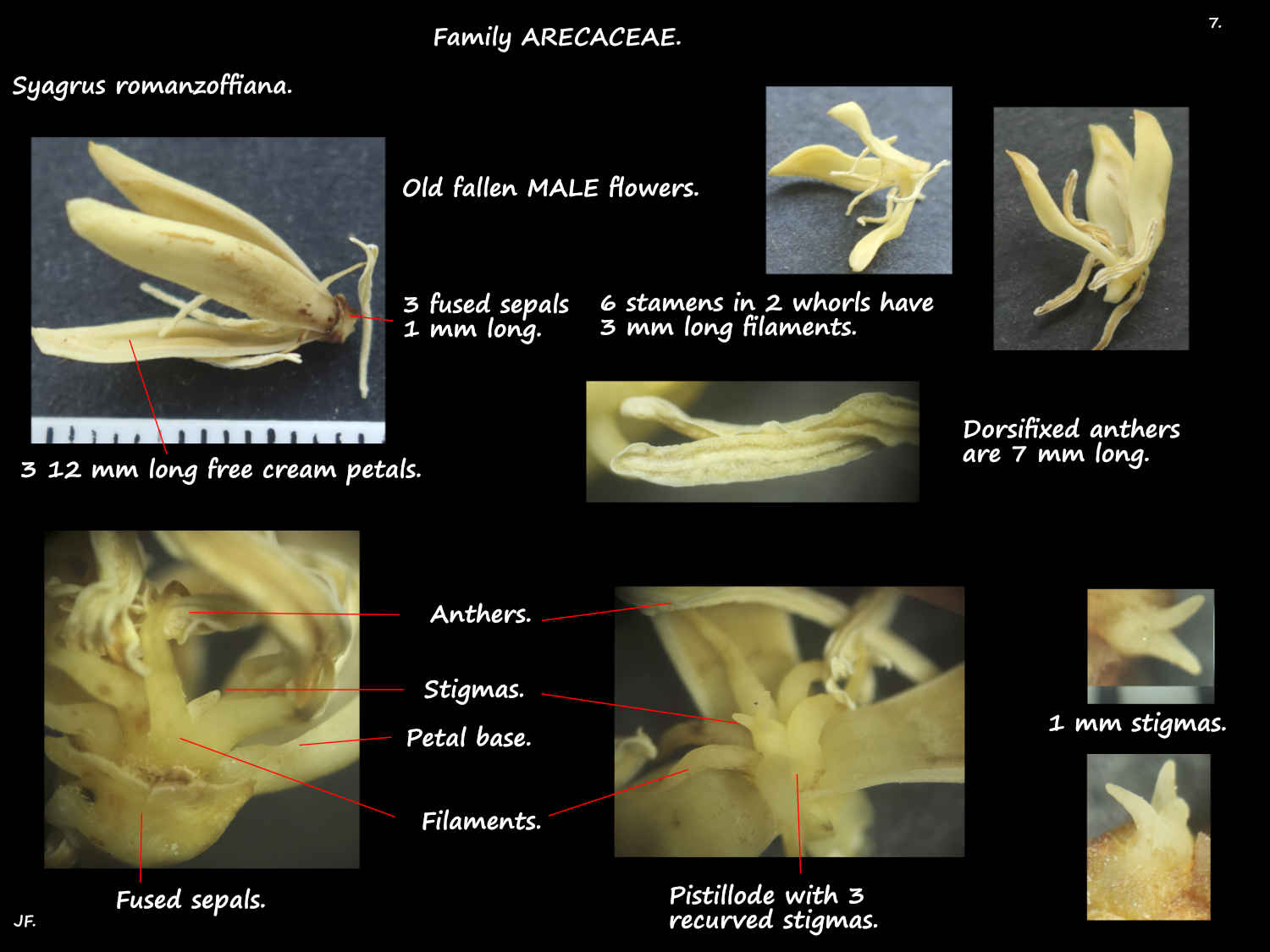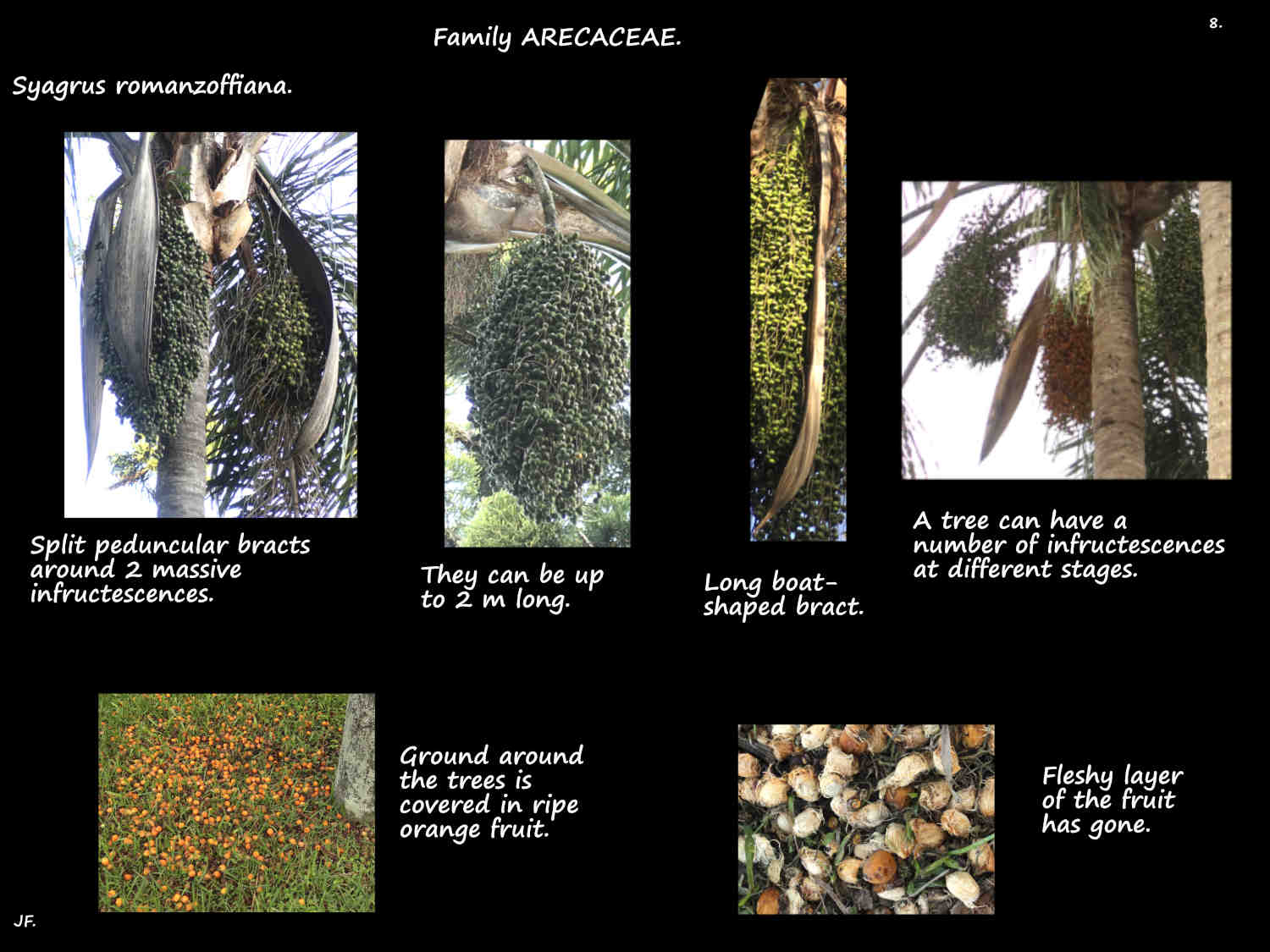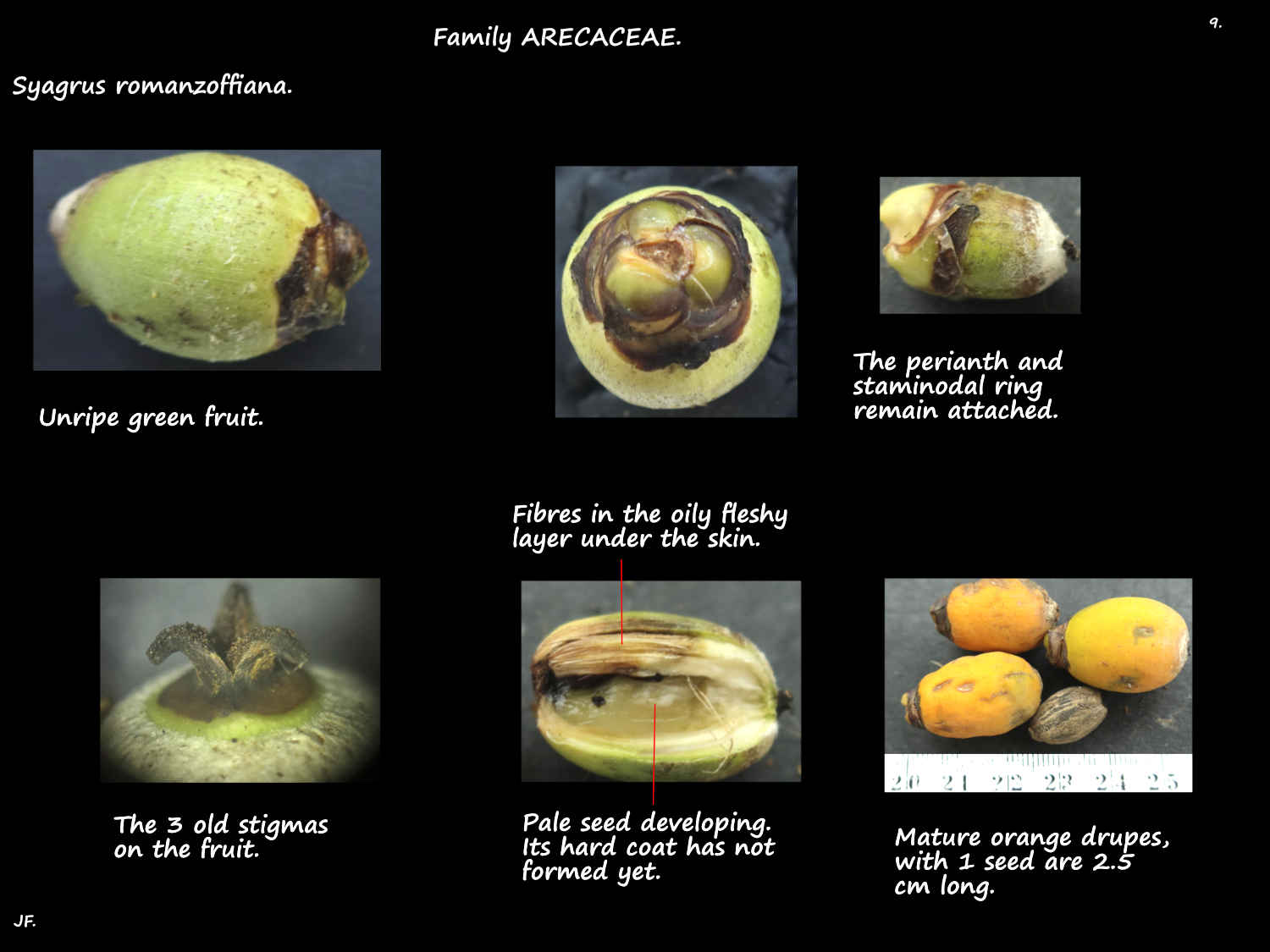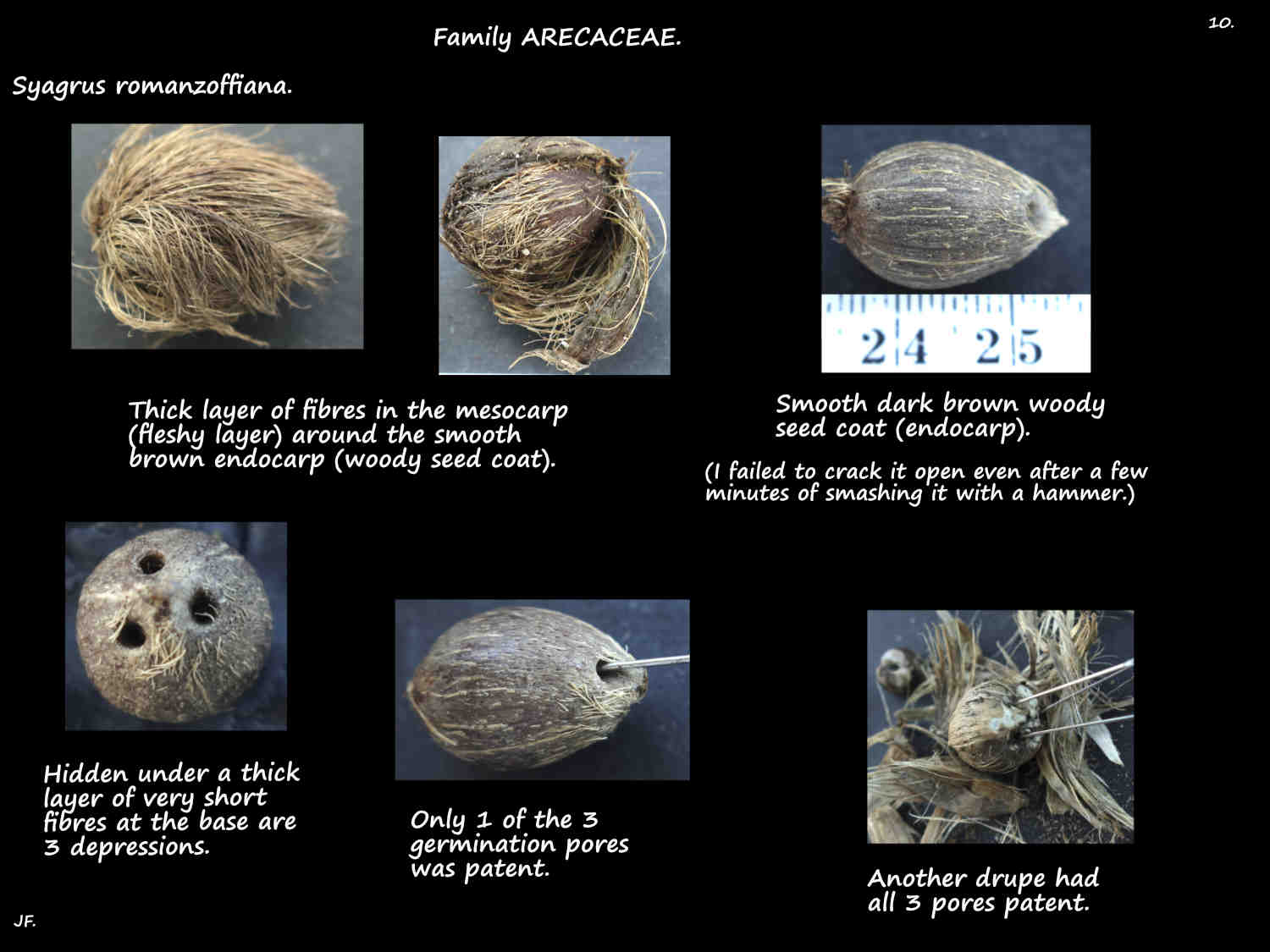The Queen palm is naturalised in S. E. Queensland.
Very common in Brisbane they are now an environmental weed.
Previously in the Cocos genus they are still commonly known as Cocos palms.
The solitary palms are usually around 10 to 15 m high but can grow to 20 m.
The grey trunk is usually around 30 cm across but can reach 60 cm.
The lower trunk is smooth with faint ring scars from fallen petiole bases.
The upper section, where leaves have recently fallen has more marked scars.
Rings are widely spaced along the lower trunk and closer at the top.
The leaf sheaths do not form a crown shaft.
The crown has around 10 to 25 leaves alternately arranged in a spiral.
The long petiole has a grooved upper surface.
The many loose fibres along the edges of the base are soft or stiff.
Leaves, up to around 5 m long are pinnate with an odd terminal leaflet.
The midrib has up to 500 leaflets (pinnae) up to 1 m long and 4 to 5 cm wide.
Leaflets have a pointed or split tip, parallel veins and a smooth edge.
The edges are folded down (reduplicate) making the blade an inverted ‘V’ in cross section.
Leaflets, in groups of 2 to 7 around the midrib grow in different directions.
This gives the leaf a 3 dimensional shape that looks like a plume (plumose).
Leaflets towards the tip are in 1 plane.
Up to around 60 cm of the distal end of the leaflets often droop down.
Dead leaves remain for a long time but eventually fall.
Inflorescences, among the leaves are up to 2 m long.
They are a panicle that is only branched once.
When new they are surrounded by a short prophyll and a peduncular bract.
The woody boat-shaped peduncular bract splits lengthwise but does not fall.
The pendulous spirally arranged branches (rachillae) have groups of flowers down them.
Groups have 1 female between 2 males all directly attached to the rachillae.
At the tip are single male flowers.
Male flowers have 3 fused sepals and 3 free cream petals.
There are 6 stamens in 2 whorls and a pistillode with 3 tiny lobes.
Female flowers have 3 free sepals and 3 longer free cream overlapping petals.
The 6 staminodes form a ring at the base of the large ovary.
There is no style and the 3 stigmas curve back.
Male flowers open first, release the pollen then drop before the females open.
The ovoid fruit, 2 to 3 cm long mature from green to yellow then orange.
They develop in very large dense clusters (infructescences) up to 2 m long.
The oily orange fleshy layer has a lot of longitudinal fibres.
The very hard woody layer around the single seed has 3 germination pores at the base.
J.F.
